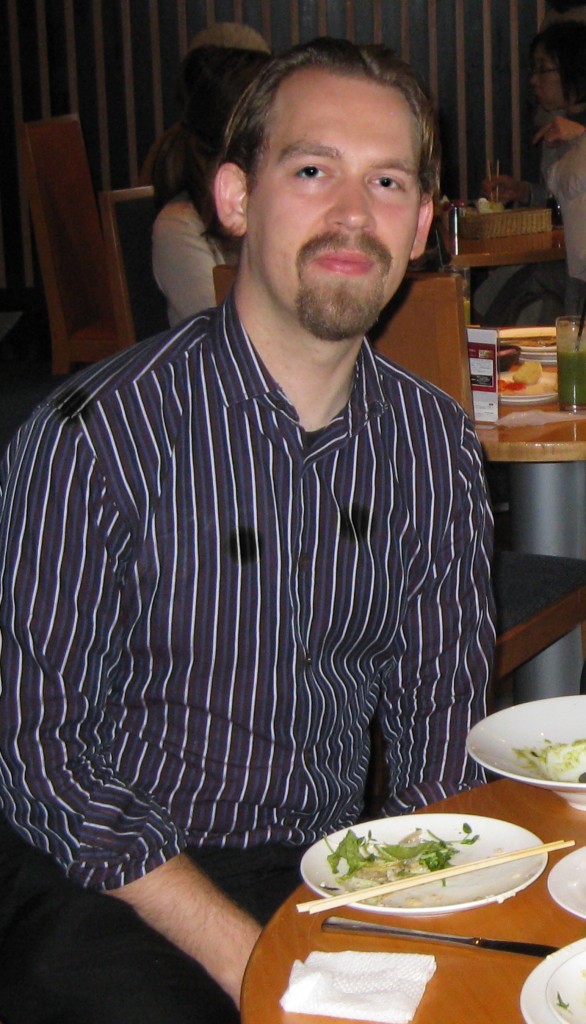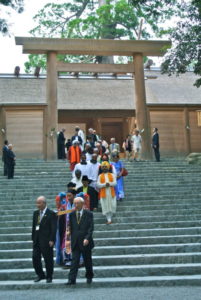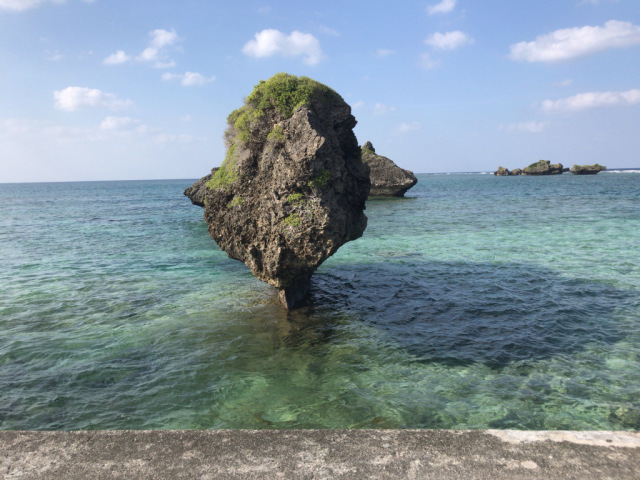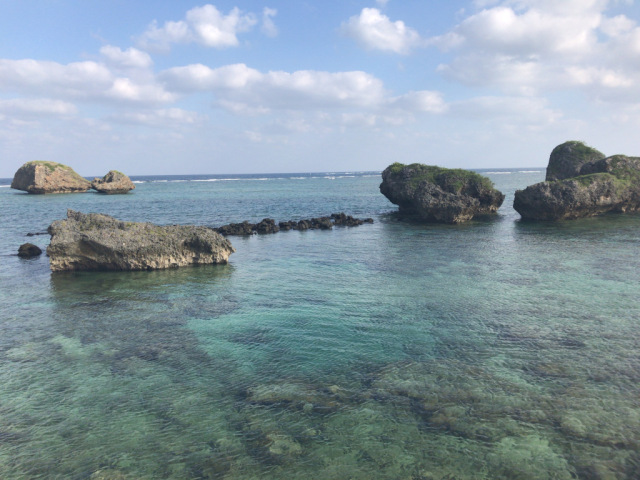Six Different Paradigms
In a paper delivered at the University of Oslo, Aike Rots considered the vexing question of defining Shinto and came up with six different concepts. It is one of the best and clearest overviews that Green Shinto has seen. The following is extracted from his lecture, with added paragraphing and bold font for emphasis. (For those who would like to see the original, please click here.)
***************

(photos by John Dougill)
Aike Rots writes: In some ways, defining Shinto is even more difficult than defining Christianity, Islam or Buddhism. Those three religions all somehow trace their own history back to a legendary historical founder – Jesus, Muhammad or Gautama Buddha – and to the period in which this person lived. But when it comes to Shinto, there is very little consensus about when this religion started.
Famously, Shinto has no single founder, and it is not easy to trace it to one single period in history. Some argue that it is has existed since ‘time immemorial’; according to one of most famous and widely read English-language introductions, it is the Japanese ‘native racial faith which arose in the mystic days of remote antiquity’ (Ono 1962, 1).
Among Shinto intellectuals, there is disagreement over the question whether the tradition goes back to the worship practices of hunter- gatherers in the Jōmon period (30,000 -300 BCE) or to those of Yayoi-period rice farmers (300 BCE-300 CE). Many serious historians think the tradition was shaped much later, under the influence of Chinese ideology and rituals, and of Buddhism: in the Nara period (8th century), according to some; in the late-medieval period, according to others; or even in the 18th or 19th century, as a modern invented tradition (e.g., Kuroda 1981).
In any case, it is important to realise that there is a difference between two things. On the one hand, there is the historical reality of shrine worship, of the worship of local deities (kami) by means of ritual sacrifice and prayers (norito ). These worship practices have always been characterised by great local diversity, constant change, and continuous interaction with Buddhism, Confucianism and Chinese cosmology and ritual. On the other hand, there is the abstract concept ‘Shinto’, conceptualised as a single and singular tra- dition, which symbolically unifies the Japanese people as a nation and which is often seen as intimately connected with the imperial institution.

This is different from most insiders’ interpretations, and from most popular introductions to Shinto, which usually assert that Shinto is the indigenous religious tradition of Japan – singular, ancient, uniquely Japanese, and with an unchanging core essence. That is why I call these approaches ‘essentialist’.
In my dissertation, I have distinguished between six different paradigms, according to which Shinto has been conceptualised, defined and shaped in the course of modern history. The first of these was dominant from the second half of the nineteenth century until the end of the Second World War, but it still lingers on. According to this view, Shinto is a national ritual cult focused on the worship of the divine ancestors of the imperial family; it was seen not as a religion defined by belief and personal membership, but as a collective Japanese, non-religious ritual tradition in which all citizens should take part. I have called this the ‘imperial paradigm’.
After the Second World War, this imperial ritual and ideological system (which is often referred to as ‘State Shinto ’) was dismantled; Shinto was subsequently established legally and politically as a religion. Accordingly, it was privatised, and it had to be redefined. According to the dominant post-war view, Shinto is the ancient, singular Way of ‘the’ Japanese people; it is an ethnic, racial faith, shared by all Japanese in the present and the past, by virtue of their nationality. According to this view, Shinto encompasses the realm of religion, but it is much more than that: it is the essence of Japanese culture and mentality. As such, it is public and collective, not private or individual. Ono Sokyō, whom I quoted previously, is a representative of this paradigm. It has long been the view of many shrine priests. I call this the ‘ethnic paradigm’.
There are several alternative views, however. One of these is the ‘local paradigm’. It goes back to the work of the Japanese ethnologist Yanagita Kunio, who wrote most of his works before the war; in recent years, it seems to have acquired new popularity. Proponents of this paradigm challenge the focus on the imperial tradition, and of national unity, that characterises the other two. According to them, the essence of Shinto cannot be found in powerful institutions; but, on the contrary, in local, rural worship traditions and beliefs, which have nearly disappeared. ‘Real Shinto’, according to them, can be found in the shamanistic and animistic traditions of the countryside – accordingly, they profess a nostalgic desire for a nearly-lost rural Japan, characterised by social harmony and harmony with nature. This is the image of the popular film character Totoro, living in a grove near an old farmhouse, in a beautiful rural landscape (satoyama, as it is called in Japanese).

In all these paradigms, Shinto is intimately connected with the land of Japan. But there is an alternative paradigm, which has also been around since the pre-war period, and which I call the ‘universal paradigm’. According to this view, Shinto may have emerged in Japan, but it is essentially a salvation religion, which has the potential to reach out to – and maybe even save – the rest of the world. This view is characteristic of many membership-based groups, so-called ‘ new religious movements ’ , which define themselves as Shinto. The aforementioned Yamakage Shinto is one of many examples. In recent years, this view has also been advocated by a number of Shinto priests outside of Japan, who have established shrines elsewhere – two well-known non-Japanese shrines are located in the state of Washington (US) and in Amsterdam. The last one, interestingly, was founded by a priest trained in the Yamakage tradition.

There is some overlap with the fifth paradigm, which I call the ‘spiritual paradigm’. I think it is worth distinguishing between these two, as not all proponents of the spiritual paradigm have an international agenda; some are downright nationalist. Simply put, according to advocates of this view, Shinto is a religion without doctrine, a primordial worship tradition; it can only be truly grasped intuitively, by means of a mystical experience of the divine, not intellectually. Politics, theology, philosophy – it is all peripheral, according to this view. (So basically this whole story shows that I have never really understood Shinto, because otherwise I would have argued that Shinto does have a core essence, but that this essence cannot be grasped in words.) Similar arguments can be found in other religious traditions, and they are often used as a strategy to discredit criticism – by suggesting that critics are ‘unenlightened’, for instance .

Last but not least, in recent decades, a sixth paradigm has emerged – and it is this paradigm that has constituted the main focus of my dissertation. I have called this ‘the Shinto environmentalist paradigm’. It draws on the previous paradigms – in particular, I would say, the local paradigm, but also on the universal. In addition, it is influenced by the global trend to relate religious worldviews to environmental issues. Put simply, according to this paradigm Shinto is an ancient tradition of nature worship – sometimes called ‘animism’ – characterised by respect for nature and the belief that elements of nature are sacred. This tradition, it is suggested, constitutes the foundation of the social-ecological equilibrium allegedly characteristic of ancient Japanese societies. Proponents of this view typically argue that Japan’s current environmental problems are the consequence of the fact that the Japanese people have ‘forgotten’ this tradition – or so the argument goes. Therefore, in order to solve these problems, they should relearn and re-embrace the nature worship of their ancestors. This is not just important for Japan, some of them add, but may actually serve to teach the world how to live in harmony with nature.
Advocates of these ideas argue that similar ‘animistic’, pagan traditions have existed all over the world, but unfortunately, most of them have by and large disappeared and given way to monotheistic traditions, which are blamed for justifying the exploitation of the natural environment. So according to proponents of this Shinto environmentalist paradigm, the answer to [the] question would be: most certainly, yes, Shinto does offer a viable model for environmental sustainability.


































